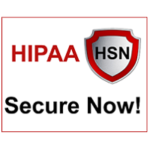Taking a break from who is hiring and who was hired, we rounded up some reading on the state of the healthcare workforce. Like many things in our lives for the past two years the pandemic has taken a toll on it. The healthcare workforce might be on the top of the list of disruption. With 18% of healthcare workers having left their jobs and another 12% being laid off, what are the solutions for healthcare as a whole? You can’t open a paper, magazine, or watch news and not hear about the crisis that has evolved. Here are some insights and reports.
In The News
B.E.S.T. Program, Simply Healthcare Partner to Expand Healthcare Workforce
Simply Healthcare Plans (Simply) (@SimplyFl) announced a donation of $75,000 to the Tampa Bay-based non-profit, Brain Expansions Scholastic Training (B.E.S.T), to support the organization’s Healthcare Entry Careers and Economic Mobility Initiative. The funding will expand the initiative’s medical skills training and mentorship offerings to underrepresented minority (URM) students to help increase access to career pathways in healthcare.
Wolters Kluwer and Laerdal Medical Launch vrClinicals for Nursing to Boost Nurse Practice Readiness With Virtual Reality
Following months of collaboration with some of the United States’ leading university nursing programs, Wolters Kluwer Health (@Wolters_Kluwer) and Laerdal Medical (@LaerdalMedical) have officially launched vrClinicals for Nursing. The virtual reality (VR) based learning solution helps address today’s gaps in nursing education and the nursing workforce, allowing students to go from the classroom to a busy hospital ward where they encounter true-to-life challenges such as prioritizing care among multiple patients and the demands of practice.
CareRev Launches Breakthrough Technology to Optimize Healthcare Shift Rates
CareRev (@CareRev), a technology platform that connects healthcare facilities with qualified local professionals, announced the launch of the industry’s first artificial intelligence-based shift pricing system, Smart Rates. CareRev’s Smart Rates draws from health systems’ economic, performance, and market data to automatically adjust wages on demand. This allows health systems to take the guesswork out of shift rates to improve staffing management and fill more shifts in less time.
Relay Robotics Introduces New Hospital Delivery Robot, RelayRx to Address Nursing Shortage
Relay Robotics, Inc. (@RelayRobots), a manufacturer of autonomous service robots to the healthcare industry, introduced its newest hospital robot, RelayRx, at the American Society of Health-System Pharmacists Summer Meetings & Exhibition recently. Relay delivery robots have been deployed at 15+ hospital systems over the past five years. RelayRx delivers twice the capacity (10 gallons, 41 liters) of earlier models, with an expanded 8” touchscreen. This announcement of RelayRx comes at a key economic time in healthcare. Over 100,000 registered nurses have left the workforce in the last two years according to the American Hospital Association.
Cambia Health Foundation’s latest grants focus on addressing regional behavioral health care workforce shortages
Cambia Health Foundation (@Cambia) recently announced $570,000 of investments to address the behavioral health care workforce shortage and improve access to behavioral health care across our four-state footprint. The demand for behavioral health care has increased significantly in recent years, straining providers and making it difficult for people to access essential care.
University of Phoenix Collaborates with Ardent Health Services to Provide Education and Tuition Reimbursement for Employees
University of Phoenix (@UOPX) has announced an agreement with Ardent Health Services (@ArdentHealth) that provides Ardent team members with reduced cost for educational and training opportunities at the University. According to the University of Phoenix’s 2023 Career Optimism Index® study, 70% of employees say they are more likely to stay with their employer if they had more opportunities for upskilling. As companies navigate current workforce and talent deficits, collaboration between higher education institutions and companies provides opportunities to create educational benefits that attract new talent and retain talent already within the company.
Advanced Practice Nurses Stand Ready to Care for America’s Most Vulnerable Populations
The U.S. healthcare system faces workforce shortages and expanding costs, but new legislation will allow advanced practice registered nurses (APRNs) to work at the top of their education and training to give patients across the country access to vital healthcare services. The Improving Care and Access to Nurses (ICAN) Act (HR 2713) removes practice barriers for APRNs, including Certified Registered Nurse Anesthetists (CRNAs), helping to ensure that all Medicare and Medicaid patients have access to quality healthcare services, including anesthesia delivery and pain management services.
To Read
Sg2 Forecasts Continued Hospital Capacity Challenges as Patient Acuity Rises Over the Next Decade
Sg2 (@Sg2HealthCare), a Vizient company (@VizientInc), released its 2023 Impact of Change Forecast, projecting hospital capacity challenges will continue into the next decade, driven by higher patient acuity and staffing shortages. In addition, pharmaceutical and technological advancements will continue to push care delivery, including bariatric surgery, to outpatient status and sites throughout the next decade.
New Study Projects Devastating Losses to Drug Development, Jobs and Patient Health in Biopharma Ecosystem
A new study by We Work For Health (@weworkforhealth) and Vital Transformation (@VitalTransform) estimates that there would be 237 fewer FDA approvals of new medicines for patients battling cancer, neurological, and rare and infectious diseases over the next decade as well as 1.1 million lost jobs if proposals to expand government-mandated drug pricing policies are implemented. Among the proposals under consideration is allowing Medicare to set prices for specific drugs five years after FDA approval, which would lead to significant lost therapies, innovation and jobs in the biopharma ecosystem at an even more accelerated pace. These proposals are included in the White House’s FY 2024 budget as well as the Senate’s SMART Prices Act.
Survey: Nursing Home Providers Say Workforce Challenges Continue To Persist
As hundreds of long term care professionals descend on Capitol Hill recently, the American Health Care Association and National Center for Assisted Living (AHCA/NCAL) (@ahcancal) released a survey of more than 400 nursing home providers from across the U.S. highlighting that the sector continues to face a serious workforce crisis. The lack of interested and qualified caregivers is forcing more than half of nursing homes to turn away new patients, and more than one-quarter have downsized their facility or closed completely. The survey also underscores how an unfunded, federal staffing mandate will be impossible for nursing homes to meet given the current labor market conditions.
Resources
 Staffing Resource Center
Staffing Resource Center
MGMA
Twitter: @MGMA
With physician burnout on the rise and engagement on the decline, it can feel like there’s nothing you can do to combat the staffing shortage impacting the healthcare industry. Check out their list of best resources to help you restore your staffing levels and make it through the twilight of this pandemic. You can do this, and we’re here to help.
 2022 Healthcare Workforce Rescue Package
2022 Healthcare Workforce Rescue Package
All In WellBeing First for Healthcare
Twitter: @AllIn4WellBeing
Two years into a global pandemic, healthcare team members are in crisis. Leaders are bombarded with competing messages about how to support them and address workforce shortages. A group of experts in collaboration with the National Academy of Medicine identified the top five actions leaders should take to support team members now. These evidence-based actions can be initiated within 3 months and build a foundation for a long-term system well-being strategy.
 Remote Workforce and HIPAA
Remote Workforce and HIPAA
Twitter: @HIPAASecureNow
Whether a change in your business structure came about from the pandemic, or it just makes more sense for your team, remote work is the norm for many more professionals today than it was in years past.
If you’re in healthcare, this means that you need to factor in the HIPAA component as well as cybersecurity to protect you, the business, and your patients.

